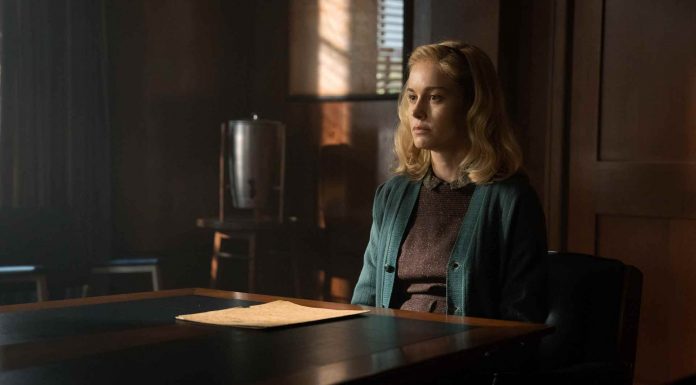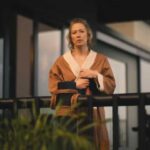A strong female protagonist and a setting in the 1950s United States make “Lessons in Chemistry,” an Apple TV+ series, a compelling watch. The story takes us on Elizabeth Zott’s journey through her life. She gets fired from her lab position after finding out she is pregnant, which is a clear illustration of the discrimination women faced in the workplace in the 1960s.
Elizabeth (Brie Larson) takes advantage of the chance to host a cookery show called “Supper at Six.” Her unorthodox choice of profession paved the way for her to become a television influencer and a symbol of female empowerment. The show highlights the significance of Elizabeth’s friendship with Lewis Pullman’s character, Calvin, a fellow scientist. But tragically, Calvin dies in an accident, leaving Elizabeth to deal with the challenges of being a single mother.
“Lessons in Chemistry” has an air of realism with its classic 1950s sets and costumes, which can make you question if it’s based on a true story. tvacute will examine the plot, the characters, and whether this intriguing series has historical precedent in this investigation.
Lessons in Chemistry Season 1 Episode 5 Recap: CH3COOH
Is [Apple TV] ‘Lessons in Chemistry’ Based on a True Story?
No, “Lessons in Chemistry” is not based on a true story. The series’ fictitious characters and events are based on Bonnie Garmus‘s best-selling same-name novel, however, it includes elements influenced by real-life experiences and 1950s and 1960s societal norms.
The bestselling book that forms the basis of the series was written by Bonnie Garmus, who took inspiration from both her own experiences and those of her mother. In the 1960s, the very decade that the book and series are set in, her mother had made the shift from nurse to housewife. Garmus stressed in an interview with CBS News that her art is a tribute to her mother and all the women in her generation whose aspirations were frequently dashed by social norms.
In the series, Elizabeth Zott faces many challenges on her path to becoming a well-known chemist, which is similar to Garmus’s own experiences as an author. Despite not working in STEM like Elizabeth, Garmus’s first book was rejected an astounding 98 times before it became a bestseller. Since the author and her fictional character both had to overcome rejection in their respective fields of expertise, they serve as metaphors for tenacity and unyielding commitment.
Despite being a work of fiction, “Lessons in Chemistry” immerses viewers in a historical period that presented many difficulties for women. Women’s responsibilities in the 1960s were mostly restricted to those of spouses and mothers, with few chances for professional advancement. Socially acceptable jobs for women included secretaries, teachers, and nurses, to name just a few. Although women were permitted to work in a wider variety of jobs during World War II, traditional gender roles returned in the postwar era. Only one-third of women were employed in the 1960s, and the majority of them were unmarried, according to CBC. The restrictions imposed by society at the time are reflected in Elizabeth Zott’s concerns about marriage and pregnancy getting in the way of her professional goals.
In addition, Elizabeth’s role in “Lessons in Chemistry” serves as a window into the 1960s women’s movement. “Supper at Six,” Elizabeth’s fictitious culinary show, is reminiscent of the enduring appeal of authentic cooking-related television programs, such as Julia Child’s “The French Chef.” Elizabeth is shown as a perceptive and articulate woman who utilizes her position to teach her audience about subjects other than food. She progressively started speaking out about protests and feminism, channeling the energy of the women who battled sexism and equal pay in the 1960s feminist movement. “Lessons in Chemistry” captures the struggles and dreams of women in a bygone era. Although the show isn’t based on actual historical events, it pays homage to the women who disregarded stereotypes and cleared the path for a more equal society in the future.
Is Elizabeth Zott from ‘Lessons in Chemistry’ Based on a Real Person?







